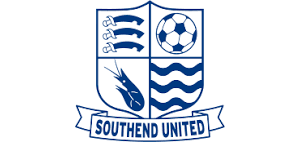DoDTS
The PL League Boss⭐⭐🦐
1927 saw the introduction of Greyhound racing at the Kursaal which was initially seen as an enjoyable diversion from Football with a chance to have a legal flutter, but it also was a big attraction for “trippers” many who would attend the worse the wear through drink and were known to cause problems. Greyhound meetings were often held four times a week and the Kursaal being a tight enclosure meant the pitch and the track overlapped and the playing surface suffered. As the novelty wore off a certain amount of resentment from the football spectators ensued as the good Kursaal pitch becoming a mud bath in places. By the end of 1920s, annual attendances at the country's licensed tracks were totalling 17 million.
They offered cheap quick thrills, and an excuse for a good night out, plus a bit of a punt. Above all, they were proudly working-class. The early appeal of greyhound racing to Britain's working men is easy to explain, said the chairman of the British Greyhound Racing Board: "At that time, a working man couldn't get a legal bet except at a dog track and he couldn't get credit at a bookmakers. Greyhound tracks were also a lot cheaper to get into than racetracks, and far easier to get to." The sport, he said, is "deeply embedded in a certain kind of cultural life.
THREW “BOOKIE” DOWN A BANK
THEN ASSAULTED THREE CONSTABLES FROM GREYHOUND RACES TO PRISON
There was another scuffle at the greyhound race track at the Kursaal on Tuesday followed by the appearance at Southend police Court of a Leyton man who was charged with being drunk and disorderly and with three police constables in the execution of their duty. In court a PC stated that he was on duty at the greyhound stadium at 6.50 p.m. when he saw the prisoner on the south bank of the ground causing a disturbance. He was drunk and fighting with a large crowd of people round him. He threw a bookmaker down the bank and when the bookmaker returned the prisoner adopted a fighting attitude and used indecent language, he was approached by Police officers at which he said “no ---------policemen would put him out of the ground” and a scuffle developed between him and three police officers. THREW “BOOKIE” DOWN A BANK
THEN ASSAULTED THREE CONSTABLES FROM GREYHOUND RACES TO PRISON
From the Southend Standard


















